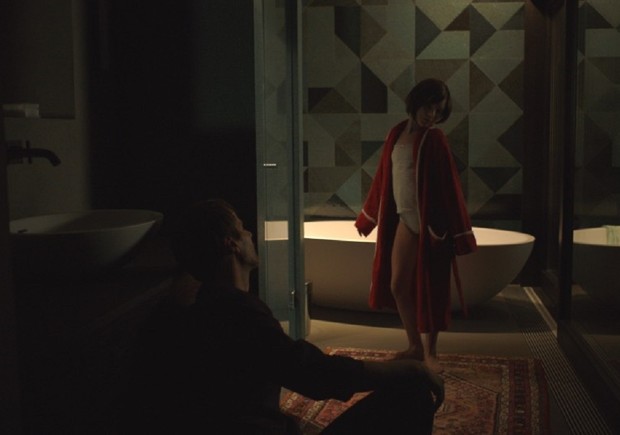
Child sex-abuse dolls and AI
This article contains discussion of child sexual abuse and exploitation
The Trouble with Being Born (2020), an Austrian-German film recently premiered at the 20th Berlin International Film Festival, raises a number of disturbing issues in the debate around sex, robotics and paedophilia. Featuring a sexually abusive relationship between a father and Eli, his child robot of 10 years old, it seeks to explore the gap between ‘image vs implications, human vs non-human, real vs unreal’ (Variety) but in reality brings paedophilia back into mainstream culture. Directed by Sandra Wollner this ‘desperately creepy, queasy’ film was met with general disgust by movie goers, but won the Berlinale FIPRESCI Prize Award.
Why is this film problematic? After all, ‘it’s pure fiction’, ‘it’s just a film’, or ‘you can examine the robot to no end because it’s not a real child…(it’s) a non-child.’ (comments from the Youtube trailer of the film)
Let’s lay a few things on the table.
First of all, let us be clear on terminology. For the last 10 years we’ve heard academics and media talk about ‘child robots’ and ‘child sex dolls.’ They are not. They are ‘child sex-abuse dolls’ or ‘child sex-abuse robots’, terms which more accurately describe the inherent abuse and power involved. While robots aren’t real, child sex-abuse dolls are artefacts that simulate a cultural practice that is extremely harmful to children. There can be no sex with children, only forms of sexual abuse and rape.

The trouble with being born (2020).
Ronald Arkin, the director of the mobile robotic lab at Georgia Institute of Technology, was one of the first people to argue for childlike dolls for paedophiles ‘on prescription’. Not a child rights campaigner, not a therapist who has worked with victims of child abuse, he is a developer of military robots and a high profile roboticist arguing for the use of child sex-abuse robots for paedophiles.
“The best way to end child sexual abuse is to end male opportunities to abuse and view child abuse imagery.”
Noel Sharkey from the not-for-profit Foundation of Responsible Robotics, based in the Hague, the Netherlands, consulted with paedophiles when reflecting on the therapeutic benefits of childlike robots. He’s currently arguing for their ban under general use only, explaining ‘I’m saying general use because if they have a therapeutic use under a licenced therapist, I’m not going to stand in its way.’
The best way to end child sexual abuse is to end male opportunities to abuse and view child abuse imagery.
Studies show the abuse of children is becoming more extreme and violent, with a direct link to the effects of viewing online pornography. It encourages (predominantly) male viewers to seek out more extreme behaviours, which has spurred one of the largest increases in child sex offenders since records began. One report has found that British men aged between 18 and 26 are a ‘new group’ of online paedophiles increasingly seeking out more extreme content online.
In no culture anywhere pre-online pornography, has the rape or abuse of babies or toddlers been apparent, even in periods where rape was the norm. But in recent years these abuse images are making their way into our culture. On the question of the historical president of abuse imagery of increasingly younger children, Professor Shiela Jeffreys states there is ‘enough evidence to show that these kinds of images arise because of internet pornography’.
Regular legal pornography is the gateway, facilitated by a global child abuse industry. The Internet Watch Foundation found that 24% of abuse imagery was of 11- 15 year olds, and 55% aged 10 or younger, with a growing proportion of 2 and under. And according to Interpol 65% of unidentified victims were girls, with 92% of visible offenders male.
“For the last 10 years we’ve heard academics and media talk about ‘child robots’ and ‘child sex dolls.’ They are not. They are ‘child sex-abuse dolls’ or ‘child sex-abuse robots’, terms which more accurately describe the inherent abuse and power involved.”
Legal efforts to regulate pedophilic robots and dolls have largely stalled or not been taken seriously. In the US, the Curbing Realistic Exploitative Electronic Pedophilic Robots Act of 2017, known as the CREEPER Act 2017, passed in the House but failed to achieve a vote in the Senate, so is not legally binding. In the UK, there is no offence for ‘simple possession of a childlike sex doll’, an issue that needs to be addressed urgently with clear regulation.
We propose that a fuller discussion take place on the lobbying impact of pro-paedophilia groups and their impact on shaping the debate around child sex-abuse dolls. Moreover, in the Campaign Against Sex Robots, we work with child abuse survivors and have developed our policies in line with academic and criminal research in the area.
In 2021 we will launch a campaign for a worldwide ban on child sex-abuse dolls and robots. Join us.
Child sex-abuse dolls and robots: fighting paedophilia
09:00-10:30 [online}
Child sex-abuse dolls are lifelike dolls of children to carry out paedophilic fantasies. Advocates of the dolls believe they could help to reduce child sexual exploitation and point to the lack of a ‘moral agent’ in the doll that is unharmed by paedophilic behaviour. Against this backdrop is a growing attempt to redefine paedophilia as a sexual orientation ‘pedosexual’ and moves to see it as an unfortunate but normal sexual orientation. We critically reject the arguments for child-sex abuse dolls and highlight the attack on children’s dignity and rights.